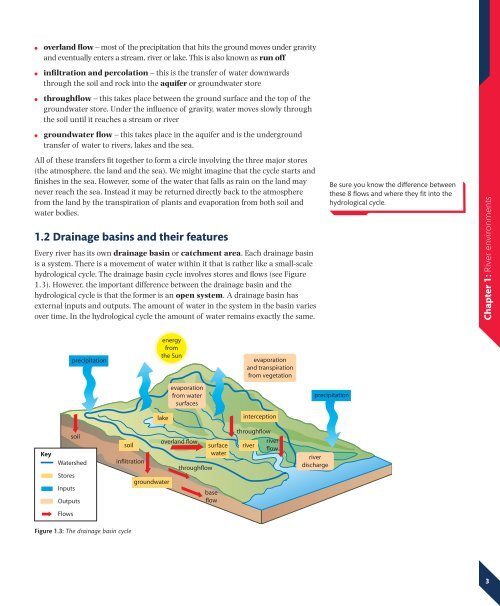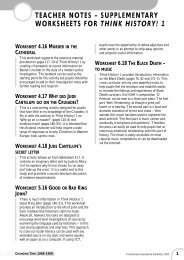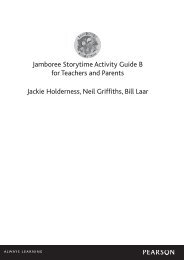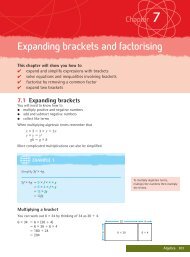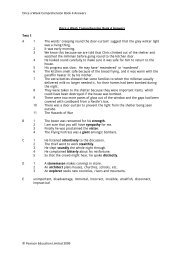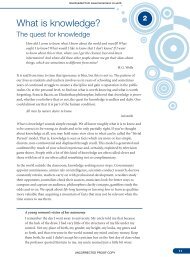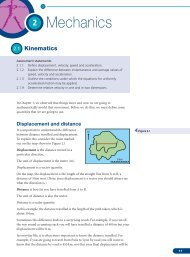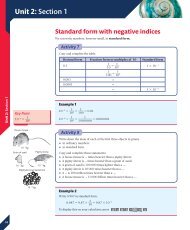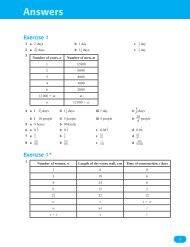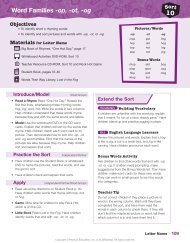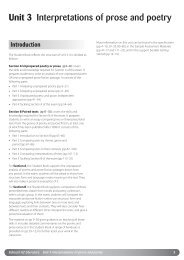Edexcel IGCSE Geography Chapter 1 - Pearson Schools
Edexcel IGCSE Geography Chapter 1 - Pearson Schools
Edexcel IGCSE Geography Chapter 1 - Pearson Schools
You also want an ePaper? Increase the reach of your titles
YUMPU automatically turns print PDFs into web optimized ePapers that Google loves.
●●●●overland flow – most of the precipitation that hits the ground moves under gravityand eventually enters a stream, river or lake. This is also known as run offinfiltration and percolation – this is the transfer of water downwardsthrough the soil and rock into the aquifer or groundwater storethroughflow – this takes place between the ground surface and the top of thegroundwater store. Under the influence of gravity, water moves slowly throughthe soil until it reaches a stream or rivergroundwater flow – this takes place in the aquifer and is the undergroundtransfer of water to rivers, lakes and the sea.All of these transfers fit together to form a circle involving the three major stores(the atmosphere, the land and the sea). We might imagine that the cycle starts andfinishes in the sea. However, some of the water that falls as rain on the land maynever reach the sea. Instead it may be returned directly back to the atmospherefrom the land by the transpiration of plants and evaporation from both soil andwater bodies.1.2 Drainage basins and their featuresEvery river has its own drainage basin or catchment area. Each drainage basinis a system. There is a movement of water within it that is rather like a small-scalehydrological cycle. The drainage basin cycle involves stores and flows (see Figure1.3). However, the important difference between the drainage basin and thehydrological cycle is that the former is an open system. A drainage basin hasexternal inputs and outputs. The amount of water in the system in the basin variesover time. In the hydrological cycle the amount of water remains exactly the same.Be sure you know the difference betweenthese 8 flows and where they fit into thehydrological cycle.<strong>Chapter</strong> 1: River environmentsprecipitationenergyfromthe Sunevaporationand transpirationfrom vegetationevaporationfrom watersurfacesprecipitationlakeinterceptionKeysoilWatershedStoresInputsOutputssoilinflitrationgroundwateroverland flowthroughflowsurfacewaterbaseflowthroughflowriverriverflowriverdischargeFlowsFigure 1.3: The drainage basin cycle3


